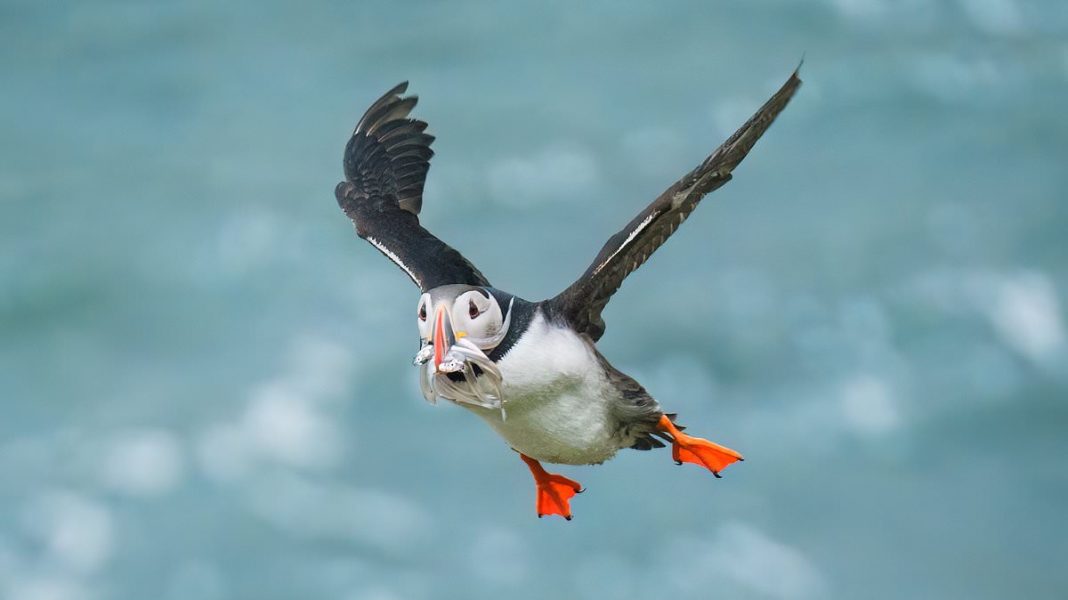More than 500 bird species face EXTINCTION in the next 100 years,
From the bare-necked umbrellabird to the helmeted hornbill, birds come in all sorts of weird and wonderful shapes and sizes.
But hundreds of species could go extinct in the next 100 years, researchers have found.
A new study predicts that climate change and habitat loss could cause more than 500 bird species to disappear in the next century.
And even with complete protection from human-caused threats, about 250 species could still die out, they warned.
‘Many birds are already so threatened that reducing human impacts alone won’t save them,’ Kerry Stewart, lead author of the research from the University of Reading, said.
‘These species need special recovery programmes, like breeding projects and habitat restoration, to survive.
‘We face a bird extinction crisis unprecedented in modern times.
‘We need immediate action to reduce human threats across habitats and targeted rescue programmes for the most unique and endangered species.’
The team examined nearly 10,000 bird species using data from the IUCN Red List – the world’s most comprehensive source on the status of plant and animal species.
They predicted extinction risk based on the threats each species face.
Analysis showed large-bodied birds are more vulnerable to hunting and climate change, while birds with broad wings suffer more from habitat loss.
Some of the species at risk of extinction are birds found in the UK, including the Balearic shearwater – of which there are around 5,800 remaining individuals.
The great bustard, the world’s heaviest flying bird, was one of Britain’s most beloved species but was hunted to national extinction in the 19th century.
Thanks to conservation efforts, a population of around 100 birds has been reestablished in the UK – but it is still at risk of disappearing forever.
The beloved Atlantic puffin, a common sight off UK coasts during breeding season, is also one of the 500 species at risk of extinction.
Other species included on the list are rare visitors which occasionally stop in the UK on their migratory routes, including the sociable lapwing and the yellow-breasted bunting.
Globally species including the Itombwe owl, found in the forests of east-central Africa, the imperial woodpecker, which is endemic to Mexico, and the yellow-bellied sunbird-asity, found in Madagascar, are also at risk.
The research also identified which conservation actions will best preserve both the number of bird species and their ecological functions.
Professor Manuela Gonzalez-Suarez, senior author of the study, said: ‘Stopping threats is not enough, as many as 250-350 species will require complementary conservation measures, such as breeding programmes and habitat restoration, if they are to survive the next century.
‘Prioritising conservation programmes for just 100 of the most unusual threatened birds could save 68 per cent of the variety in bird shapes and sizes.
‘This approach could help to keep ecosystems healthy.’
Stopping the destruction of habitats would save the most birds overall, the researchers concluded.
However, reducing hunting and preventing accidental deaths would save birds with more unusual features, which are especially important for ecosystem health.
The findings were published in the journal Nature Ecology & Evolution.
Earlier this year the world’s largest garden wildlife study revealed that starlings have dropped to their lowest number every recorded in the UK.
The RSPB’s annual Big Garden Birdwatch has shown that while house sparrows are still our most common bird, followed by the blue tit, starlings have been bumped down to fourth place by the woodpigeon.
Figures show that since 1979, there has been an 85 per cent decrease in the number of starling sightings in every British garden.
The number of woodpigeons spotted, however, has increased by an enormous 1,160 per cent.






